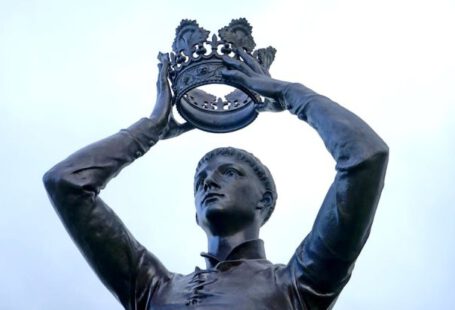“The Scream” by Edvard Munch has transcended its status as a mere painting to become an iconic representation of existential angst. The haunting image of a figure in distress, set against a blood-red sky, strikes a chord with viewers on a primal level. But what is it about this artwork that makes it such a powerful symbol of existential dread?
The Birth of a Masterpiece
When Edvard Munch created “The Scream” in 1893, he was grappling with personal turmoil and inner demons. This painting is part of his series “The Frieze of Life,” which explores themes of love, anxiety, and death. Munch himself described the inspiration behind “The Scream,” stating that he was out for a walk when he felt an overwhelming sense of anxiety and heard a “huge, infinite scream pass through nature.”
The Distorted Figure
At the center of the painting is a figure with a contorted face, mouth agape in a silent scream. The figure’s eyes are wide with horror, and the hands are pressed against the sides of the head in a gesture of despair. This distorted portrayal of the human form conveys a sense of psychological torment and inner turmoil. The lack of distinct features on the figure adds to its universality, allowing viewers to project their own fears and anxieties onto it.
The Harrowing Background
The background of the painting is equally unsettling, with swirling lines and bold, unnatural colors. The blood-red sky and dark, foreboding landscape create a sense of unease and impending doom. The contrast between the figure’s anguish and the chaotic backdrop intensifies the feeling of existential dread, as if the entire world is in turmoil and the figure is powerless to escape.
Symbolism and Interpretation
“The Scream” has been interpreted in various ways, with some seeing it as a representation of Munch’s personal struggles with mental health and others viewing it as a reflection of the anxiety and alienation of modern life. The painting has also been seen as a commentary on the human condition, highlighting the fragility and vulnerability of existence. The figure’s isolation and the absence of any other human presence enhance the sense of loneliness and despair.
Legacy and Influence
Over a century after its creation, “The Scream” continues to captivate audiences and inspire artists and thinkers around the world. Its enduring popularity can be attributed to its ability to tap into universal emotions and fears, transcending time and culture. The painting has been referenced in popular culture, from movies to memes, further solidifying its status as a symbol of existential angst.
The Unbearable Weight of Being
In a world filled with uncertainty and chaos, “The Scream” serves as a poignant reminder of the inherent struggles of the human experience. The painting’s raw emotion and stark imagery force us to confront our own fears and anxieties, prompting us to reflect on the nature of existence itself. It stands as a testament to the power of art to capture the complexities of the human psyche and evoke a visceral response in viewers.
In conclusion, “The Scream” by Edvard Munch endures as a symbol of existential angst due to its raw emotion, haunting imagery, and universal themes. By tapping into the depths of human experience, Munch created a masterpiece that continues to resonate with audiences and spark contemplation on the nature of existence and the fragility of life.





